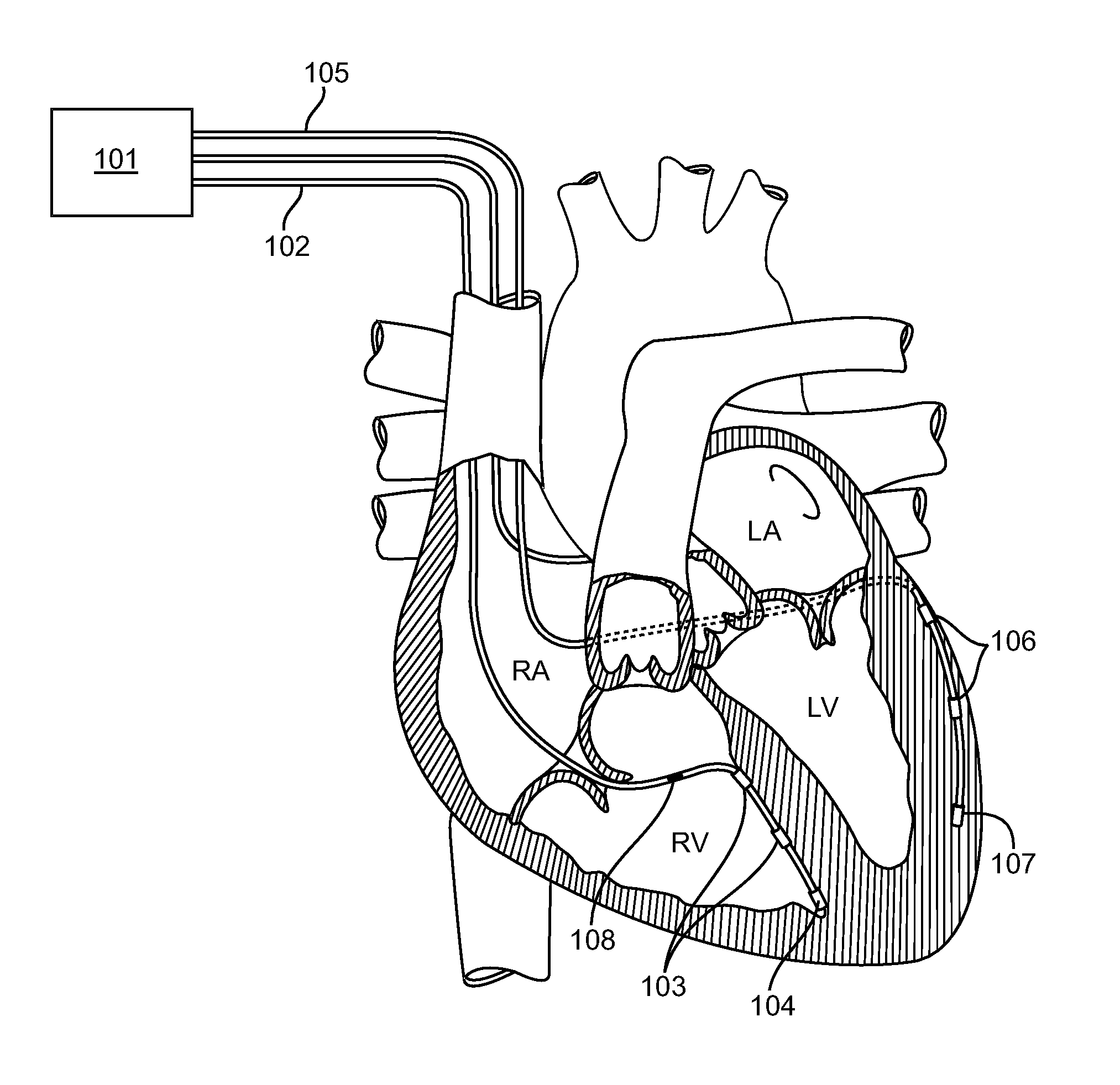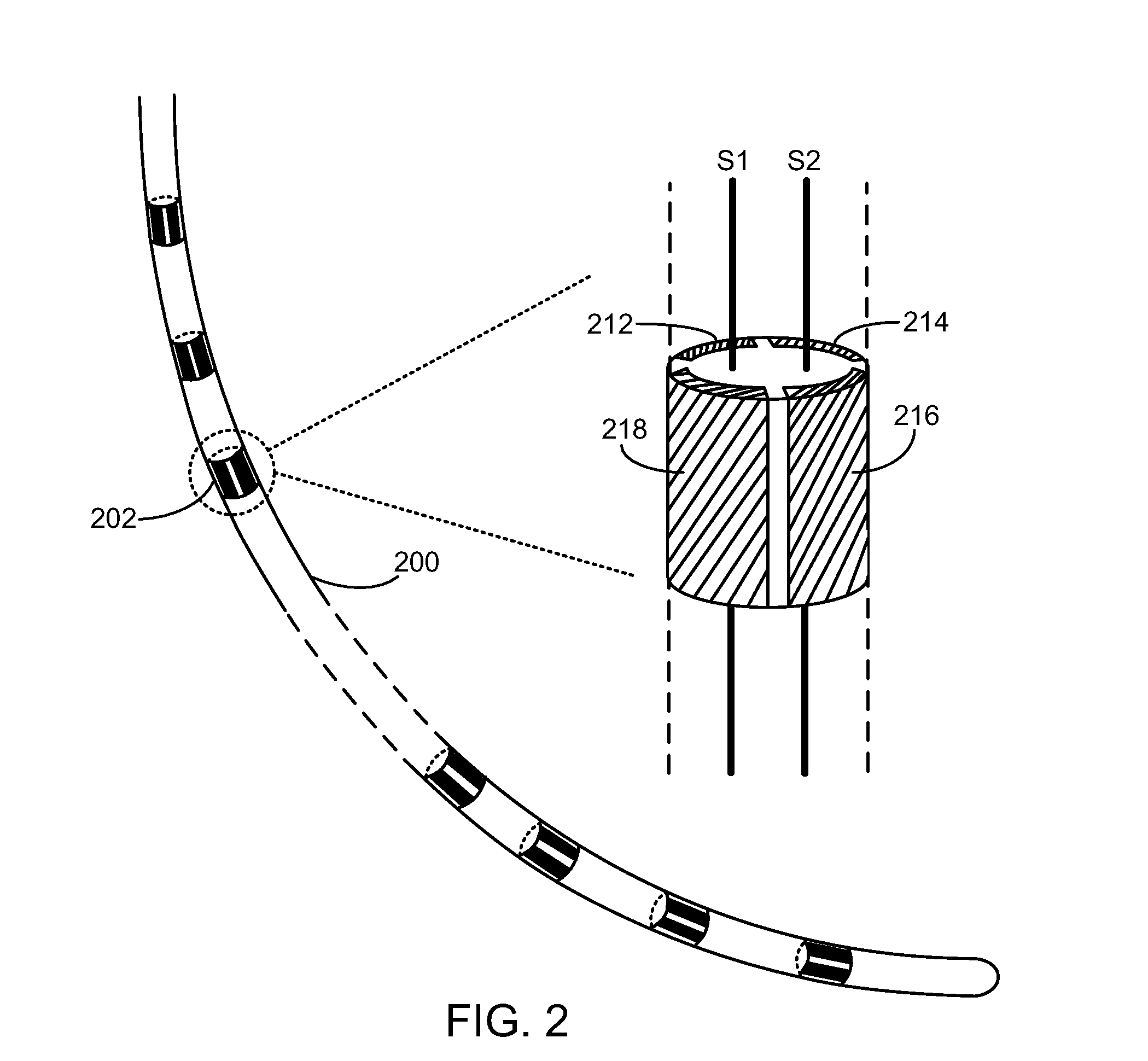Self-referencing communication in implantable devices
a communication device and implantable technology, applied in the field of biomedical implantable devices, can solve the problems of affecting the effectiveness of resynchronization therapy, limiting the application of automatically controlled implantable devices such as pacemakers, and often not incorporating the latest electronic technology into implantable devices. , to achieve the effect of robust transmission of information
- Summary
- Abstract
- Description
- Claims
- Application Information
AI Technical Summary
Benefits of technology
Problems solved by technology
Method used
Image
Examples
Embodiment Construction
[0037]As summarized above, various aspects can enable bidirectional communication suitable for implantable devices requiring a minimized interface. Such advantages provided by various aspects of the present invention enable a variety of different enhanced implantable technologies, such as enhanced implantable pulse generators, e.g., cardiac pacing devices.
[0038]Various aspects may include encoded symbols over a single wire transmission. Also provided by the invention are effector assemblies that include the integrated circuits, as well as implantable medical devices, e.g., pulse generators that include the same, as well as systems and kits thereof and methods of using the same, e.g., in pacing applications, including cardiac resynchronization therapy (CRT) applications.
[0039]In further describing various aspects of the invention, integrated circuits will be reviewed first in greater detail, both generally and in terms of the figures, followed by a discussion of implantable medical d...
PUM
 Login to View More
Login to View More Abstract
Description
Claims
Application Information
 Login to View More
Login to View More - R&D
- Intellectual Property
- Life Sciences
- Materials
- Tech Scout
- Unparalleled Data Quality
- Higher Quality Content
- 60% Fewer Hallucinations
Browse by: Latest US Patents, China's latest patents, Technical Efficacy Thesaurus, Application Domain, Technology Topic, Popular Technical Reports.
© 2025 PatSnap. All rights reserved.Legal|Privacy policy|Modern Slavery Act Transparency Statement|Sitemap|About US| Contact US: help@patsnap.com



